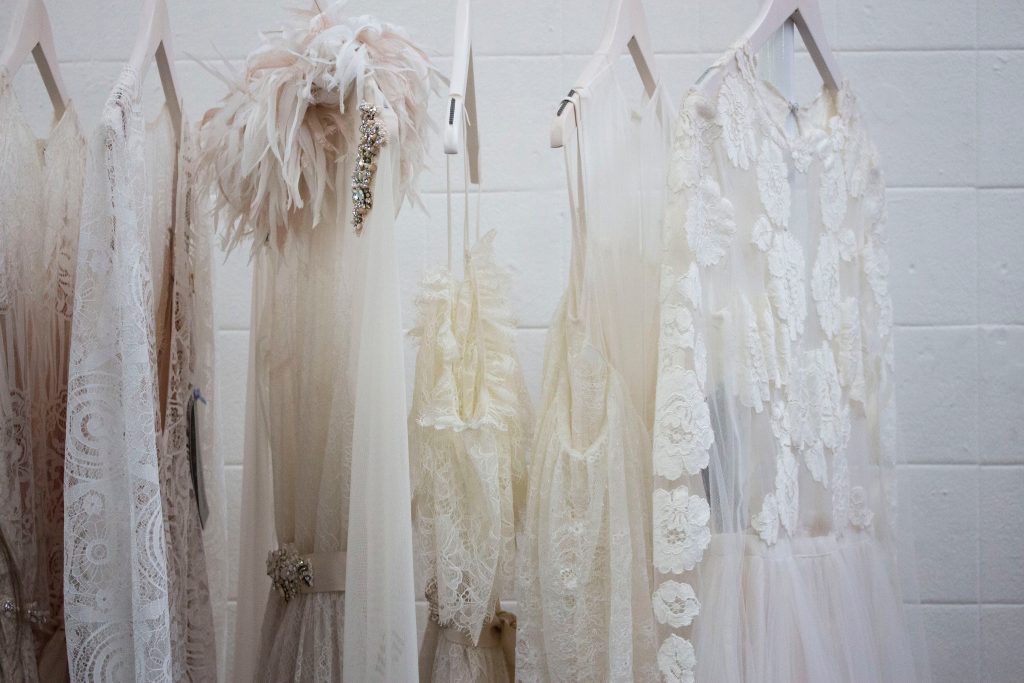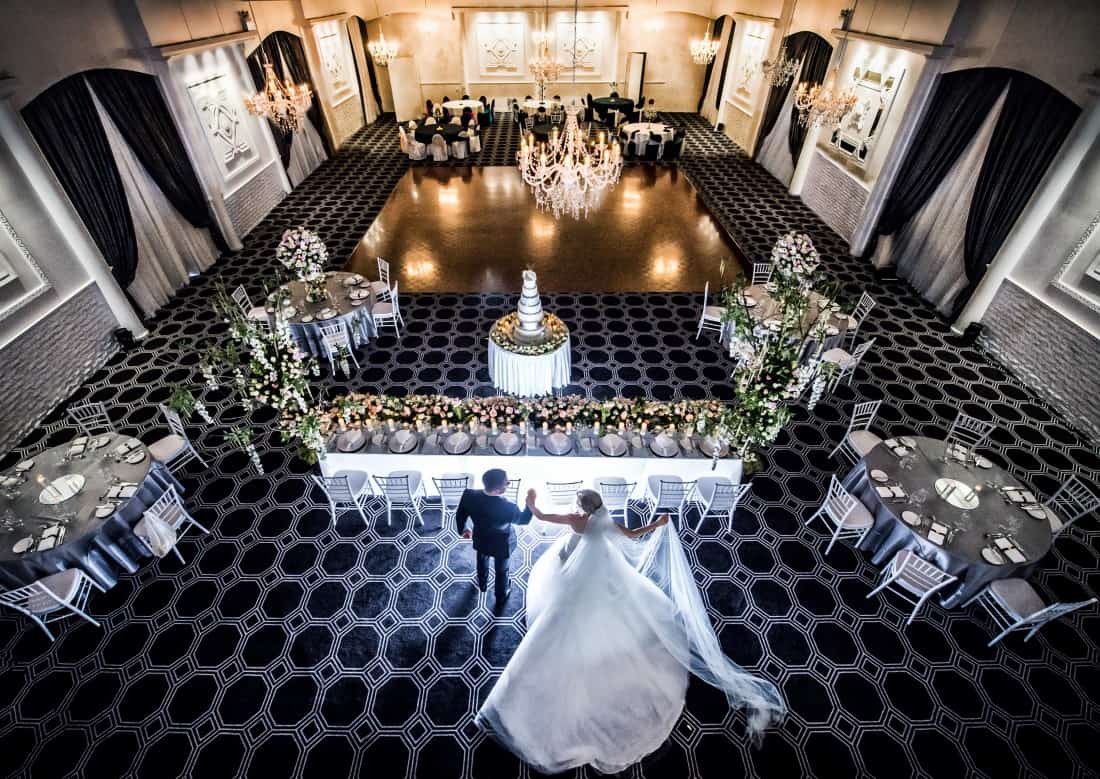Your wedding dress holds a special place in your heart and memories. After the celebration, many brides keep their gown as a cherished memento or even pass it down to future generations. To ensure your wedding dress stays as beautiful as it was on your big day, it’s important to clean and preserve it properly. In this guide, we’ll walk you through everything you need to know about maintaining and storing your wedding dress for years to come.
Let’s Get Straight to the Point
Keep your dress pristine and clean, and preserve it immediately after the wedding. Address stains quickly with gentle cleaning solutions and take the gown to a professional dry cleaner specialising in wedding dresses. Avoid machine washing.
For long-term storage, use an acid-free box in a cool, dry, and dark place, and consider professional preservation with a nitrogen-sealed box to prevent yellowing. Handle the dress carefully, using cotton gloves, and avoid plastic bags. Proper cleaning and storage will help maintain your gown’s beauty for years.
Cleaning Your Wedding Dress
1. Remove Stains Immediately
Stains are almost inevitable during your wedding, whether from food, drinks, or general wear. Addressing these stains quickly can prevent permanent damage.
- Food and Drink Stains: Common stains like fruit juice, wine, or tea can be cleaned by gently applying a mixture of three parts water and one part dish soap. For more persistent stains, mix one part water and one part bleach. However, test this solution on an inconspicuous area first to ensure it doesn’t damage the fabric.
- Lipstick Stains: Lipstick is tricky due to its oily and sometimes long-lasting formula. To avoid a last-minute disaster, avoid applying makeup while wearing the gown or protecting it by holding a towel in front of your chest. If a lipstick smudge does occur, don’t rub it—dab it lightly to avoid spreading.
- Earth-Based Stains: Mud, grass, or dirt often collect on the hem of the dress. Start by letting any mud dry, then brush it off gently with a soft-bristled brush before attempting to clean the area with water and mild soap.
2. Machine Washing Is Not An Option
Wedding dresses are made of delicate fabrics like silk, lace, and tulle, often with intricate details like beading, sequins, or embroidery. Machine washing can damage these materials.
- Handwashing: Some fabrics, like polyester or cotton, might be safe, but always follow the care label.
- For silk or heavily embellished dresses, it’s best to take them to a professional cleaner who specialises in wedding gowns. Professional cleaners use techniques and solutions that do not damage the fabric or details.
3. Choose A Professional Dry Cleaner With Expertise
When selecting a dry cleaner, it’s essential to pick one with experience cleaning wedding dresses. Not all dry cleaners can handle such delicate garments, and choosing the wrong one could lead to irreversible damage.
- Check for Specialised Services: Look for dry cleaners who use virgin solvent (new, not recycled) and are knowledgeable about preserving fabrics. Recycled solvents can leave residues and cause your dress to appear dull.
- Custom Cleaning Plans: A wedding dress isn’t cleaned with a “one-size-fits-all” approach. A professional cleaner will assess your gown, identify fabric types, stains, and areas of concern, and then formulate a custom treatment plan. This level of care is essential for maintaining your dress’s original beauty.
4. Invisible Stains Can Become Visible Over Time
One of the most overlooked aspects of cleaning a wedding dress is dealing with latent stains. Some substances, like white wine or sugar, dry clear but darken over time, especially when exposed to heat. These stains can turn yellow or brown marks if not treated properly.
- Tip: The sooner you clean your dress after the wedding, the less chance these stains will become permanent.
Preserving Your Wedding Dress
5. Start Preservation Early
Time is of the essence when it comes to preserving your wedding dress. The sooner you get it cleaned and stored, the better. Many brides wait weeks or months to take their dress to the dry cleaner, allowing stains to set in and become harder to remove.
- Ideally, you should clean your dress within a few days of your wedding. If you’re heading off on your honeymoon immediately, ask a trusted friend or family member to take care of the dress.
6. Use The Right Storage Box
A regular cardboard box or plastic bag will not do for long-term preservation. The best option is an acid-free preservation box or a trunk designed to store wedding dresses.
- Why Acid-Free? Acid can cause fabrics to turn yellow and deteriorate over time. Using acid-free materials helps prevent this.
- Avoid Plastic Bags: Plastic can trap moisture, leading to mildew or mould growth. A dress stored in plastic is also more likely to yellow over time.
7. Nitrogen-Sealed Boxes
Many professional preservation services store dresses in nitrogen-sealed boxes. This process removes oxygen from the box and replaces it with nitrogen, preventing oxidation, which leads to fabric aging and yellowing.
- Once the box is sealed, it’s best not to open it. If the seal is broken, you must have the dress professionally cleaned and resealed to ensure it remains in good condition.
8. Store Your Dress In A Cool, Dark, Dry Place
Storing your wedding dress in the right environment is important to ensure it remains in top condition. Direct sunlight can cause the fabric to fade or yellow, so store your dress in a dark place. Excessive heat or humidity can also damage it, so choose a cool and dry location, such as a closet or storage room.
9. Proper Folding And Padding
When placing your dress in a box or trunk, ensure it is folded properly to avoid creases. Use acid-free tissue paper to pad the folds and stuff areas like the bodice and sleeves to maintain the dress’s shape.
- Avoid Colourful Tissue Paper: Coloured tissue can bleed onto the dress and stain it over time.
DIY Preservation Tips
If you decide to preserve your wedding dress at home, there are a few important steps to follow:
10. Handle With Care
Always wear white cotton gloves when handling your dress to avoid transferring oils from your skin to the fabric. Oils and dirt from your hands can leave marks that are difficult to remove.
11. Test Cleaning Solutions
Before applying any cleaning solution to a visible part of your dress, always test it on a hidden area. This ensures that the cleaner won’t damage or discolour the fabric.
Additional Items To Preserve
12. Don’t Forget Your Accessories
Along with your dress, you should preserve other mementoes from your wedding day, such as your shoes, veil, or bouquet. Here’s how:
- Shoes: If your shoes are made from fabric, gently clean them with a soft cloth and mild detergent. For leather shoes, use shoe polish to maintain their shine.
- Bouquet: Some brides dry or press their bouquets to preserve them as keepsakes.
13. Consider Online Preservation Services
In recent years, many brides have turned to online preservation services for the convenience of sending their dresses to professionals without leaving home. These services typically send you a preservation kit, and once your dress is cleaned and preserved, it’s returned in a sealed box.
- Cost Considerations: Preservation services typically are costly, depending on the dress’s complexity and the service level. Avoid spending more unless your gown requires special care.
14. Fixing A Yellowed Dress
If your dress has yellowed over time due to improper storage, you can try restoring it using oxygen bleach. Oxygen bleach is safer for delicate fabrics than regular bleach. Baking soda and peroxide mixtures can also be effective for lifting yellow stains.
- For severe yellowing, it’s best to consult a professional restorer who can return the gown to its original condition.
Taking the time to clean and preserve your wedding dress properly ensures it will remain a treasured item for years. Whether you plan to keep it for sentimental reasons or pass it down to future generations, following these steps will help maintain its beauty and integrity.
From quick stain removal to professional preservation, caring for your wedding dress is an investment in keeping your memories alive. Be sure to clean and preserve your gown as soon as possible after the big day to avoid permanent damage from stains or yellowing.
Acting quickly is the most important thing to remember when preserving your wedding dress. Address stains right after the wedding, seek professional cleaning and store your gown properly in a cool, dark, dry place. By taking these steps, your dress will remain as stunning as the day you wore it.




